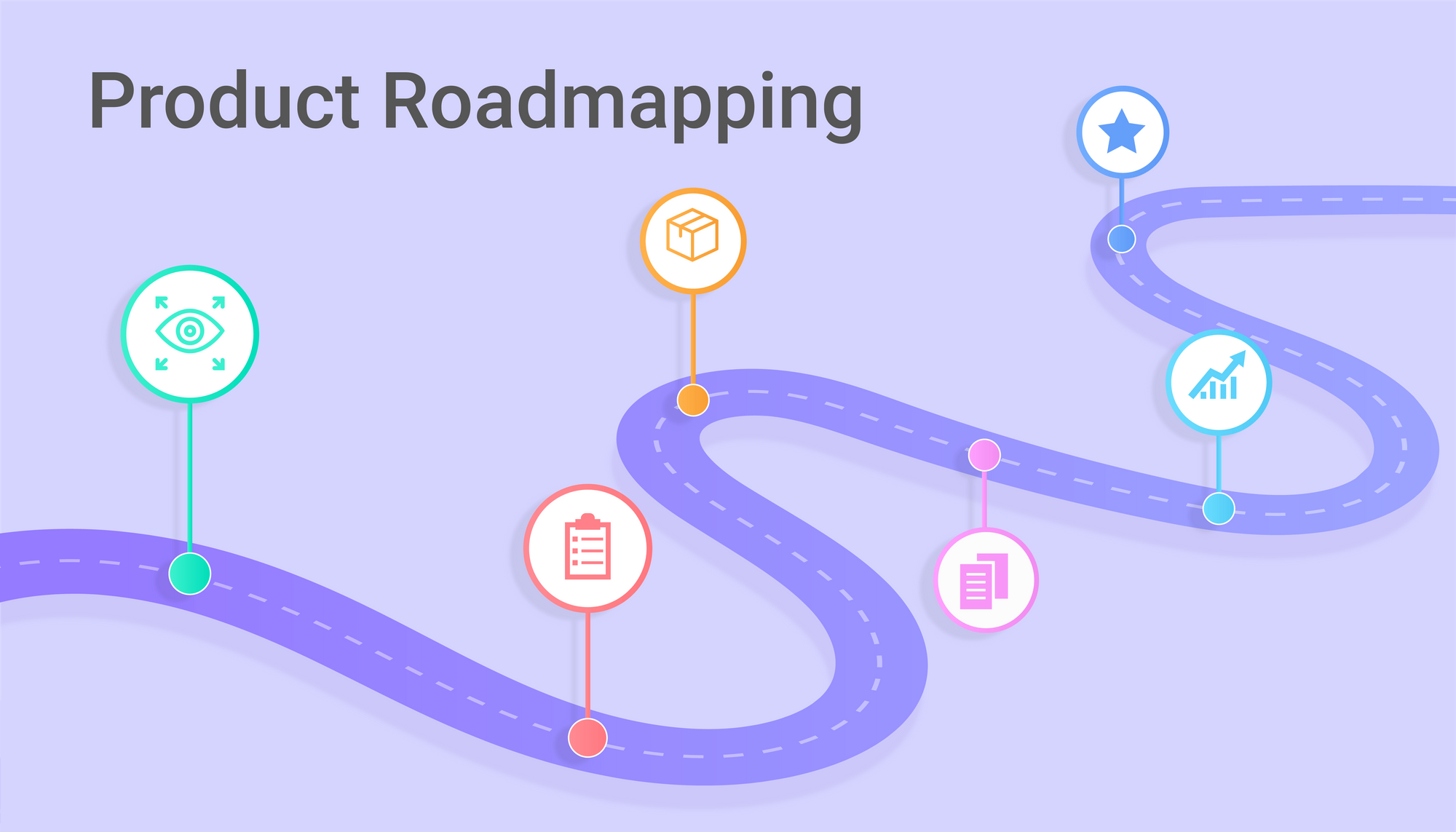Summary:
A Product Roadmap discusses how a product or solution will evolve over time. Roadmaps are built with teams. Product owners use roadmaps to outline future product functionality and when new features will be released. When used in agile product development, a roadmap provides crucial outlook for the near and future in terms of development work, other functions involvement and benefit to the Customer.
What is a product roadmap?
A product roadmap is a shared source of truth that outlines the vision, direction, priorities, and progress of a product over time. It is a plan of action that aligns the organisation around short and long-term goals for the product or project, and how they will be achieved.
While it is common for the roadmap to show what you are building, it is just as important to show why. Items on the roadmap should be clearly linked to your product strategy, and your roadmap should be responsive to changes in customer feedback and the competitive landscape.
Product owners use roadmaps to collaborate with their teams and build consensus on how a product will grow and shift over time. Agile teams turn to the roadmap to keep everyone on the same page and gain context for their everyday work and future direction.
Do we have the use of several types of roadmaps?
Yes, Roadmaps can be in different forms and serve diverse needs:
Internal roadmap for the development team: Basically, a list of prioritises customer value, target release dates and milestones. Since we at Byteridge follow agile methodologies, these roadmaps are often organised by sprints and show specific pieces of work and problem areas plotted on a timeline.
Internal roadmap for organisation: These roadmaps emphasise how teams' work supports high-level company goals and metrics along with customer benefits. They are often Programmes the company want to do to meet the customer and business needs.
External roadmap: These roadmaps should be focused on customers and informing them about what is coming next. Ensure to highlight features/ functionality that excites the customer most.
How do I build a product roadmap?
To build a roadmap, teams should consider competition, market movements, internal dependencies and business vision changes. Once these factors are understood, the product owner can work with their team to start prioritising initiatives and epics on the roadmap.
A tried-and-tested method across organisations: Break initiatives down into epics in the product backlog, then further decompose them into features, user stories and specific tasks.Thus making it easier for sponsors, product owners and the development team to get the BIG PICTURE.
The most important takeaway: create a roadmap that your audience can easily understand. Providing too much or too little detail on the roadmap can make it easy to gloss over, or worse, to too intimidating to read. A roadmap with just the right amount of detail and some visual appeal can earn the buy-in you need from key stakeholders.
Making your Roadmap flexible
As the market is dynamic, our customers' preferences change, or vision changes the roadmap should still reflect these changes in them and should the Source of truth at any given point in time. Have ceremonies to revise/ adjust the roadmap to reflect the latest.
Best practices for the best roadmaps
Product Roadmap is a living document as discussed it should get updated on a regular basis. Few thoughts that can be beneficial for
Keep It Simple Silly. Keep the roadmap simple and clear. Display short term and long-term items for visibility for the various audience. Keep the document as a living document.
Roadmap does not end here. There are items of interest like prioritising, breaking down and negotiation. Look out for these papers in this space.
For further reading please refer to https://www.cambridgeroadmapping.net/roadmapping-as-process https://www.atlassian.com/agile/product-management/product-roadmaps https://roadmunk.com/guides/tag/product/ https://www.productplan.com/learn/roadmapping/

